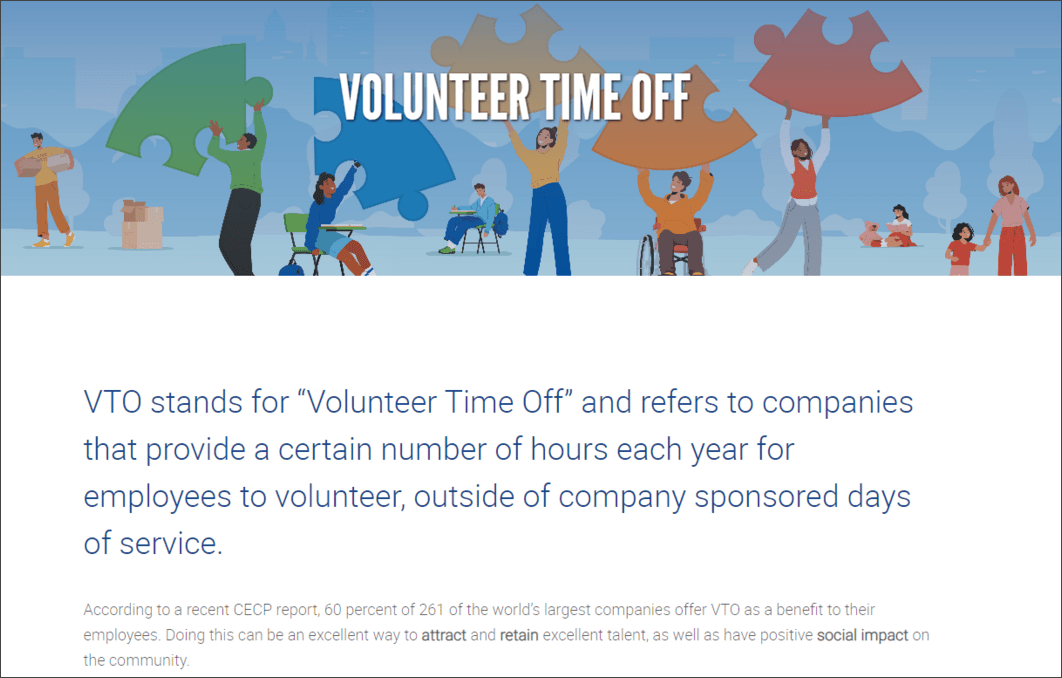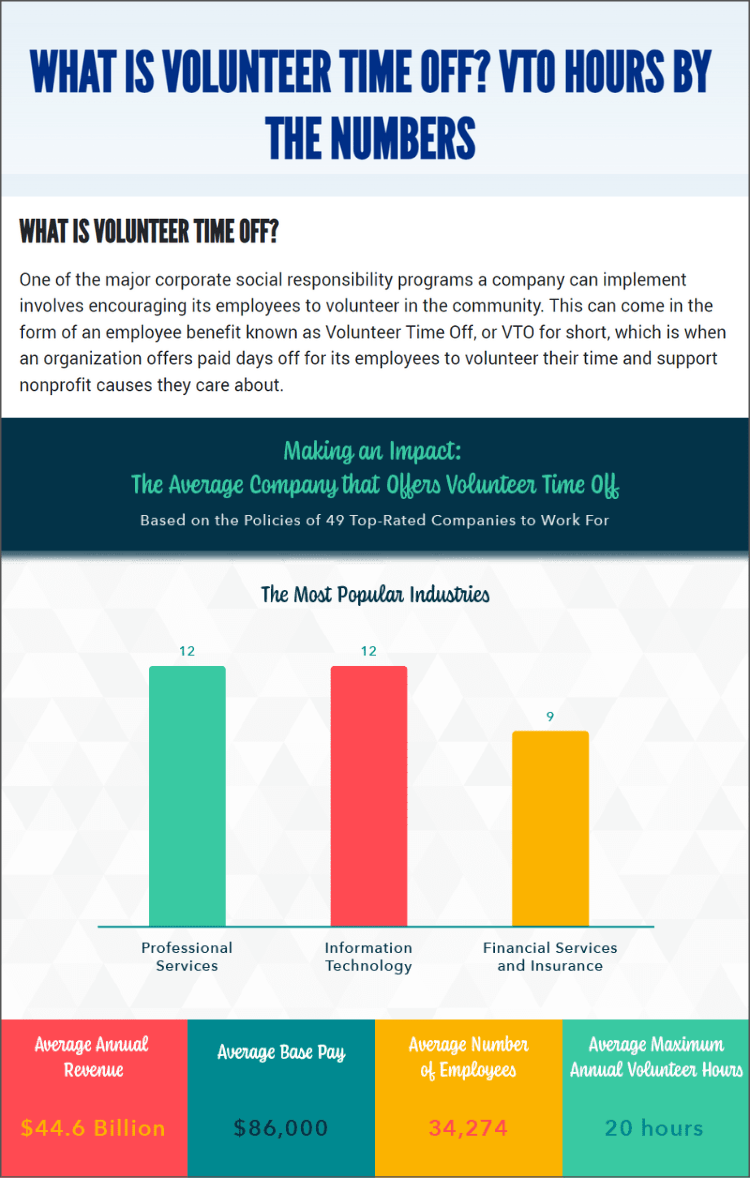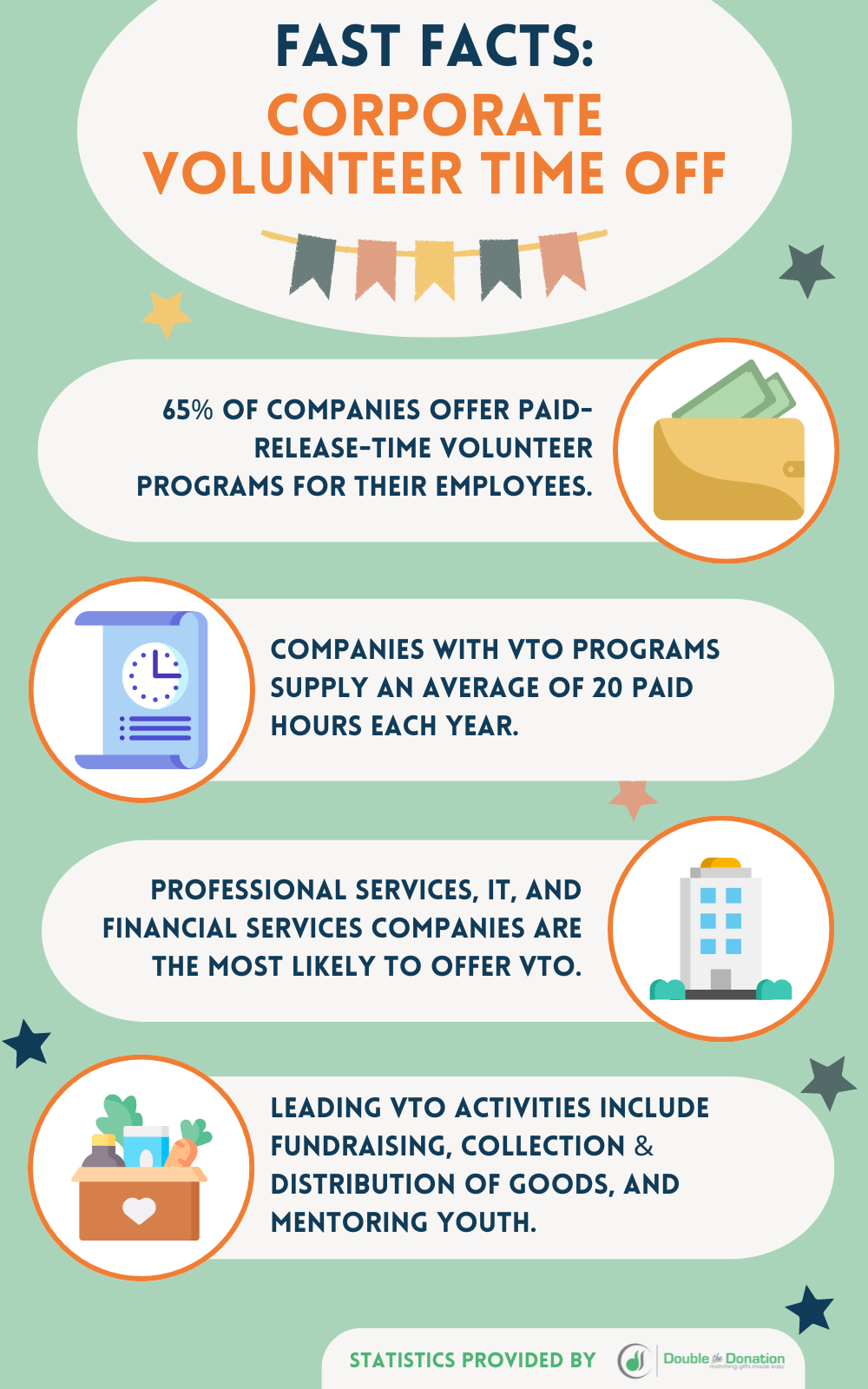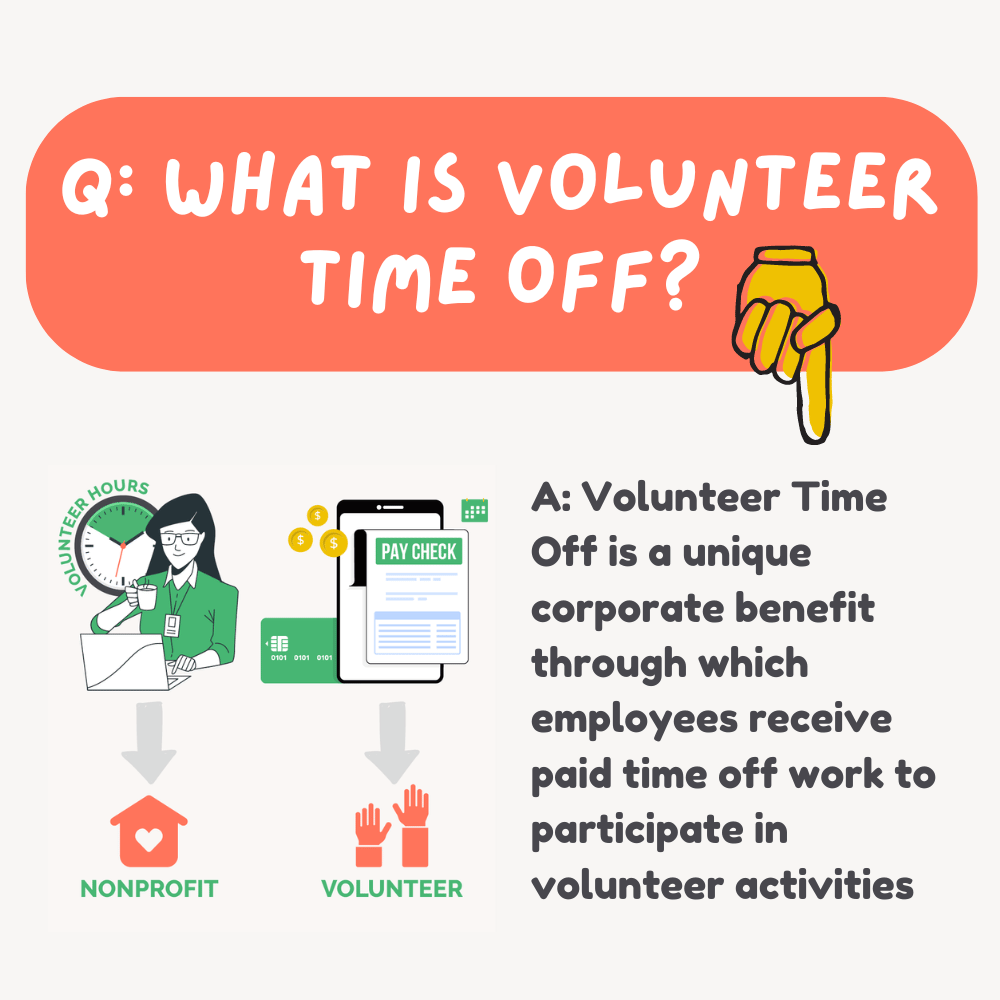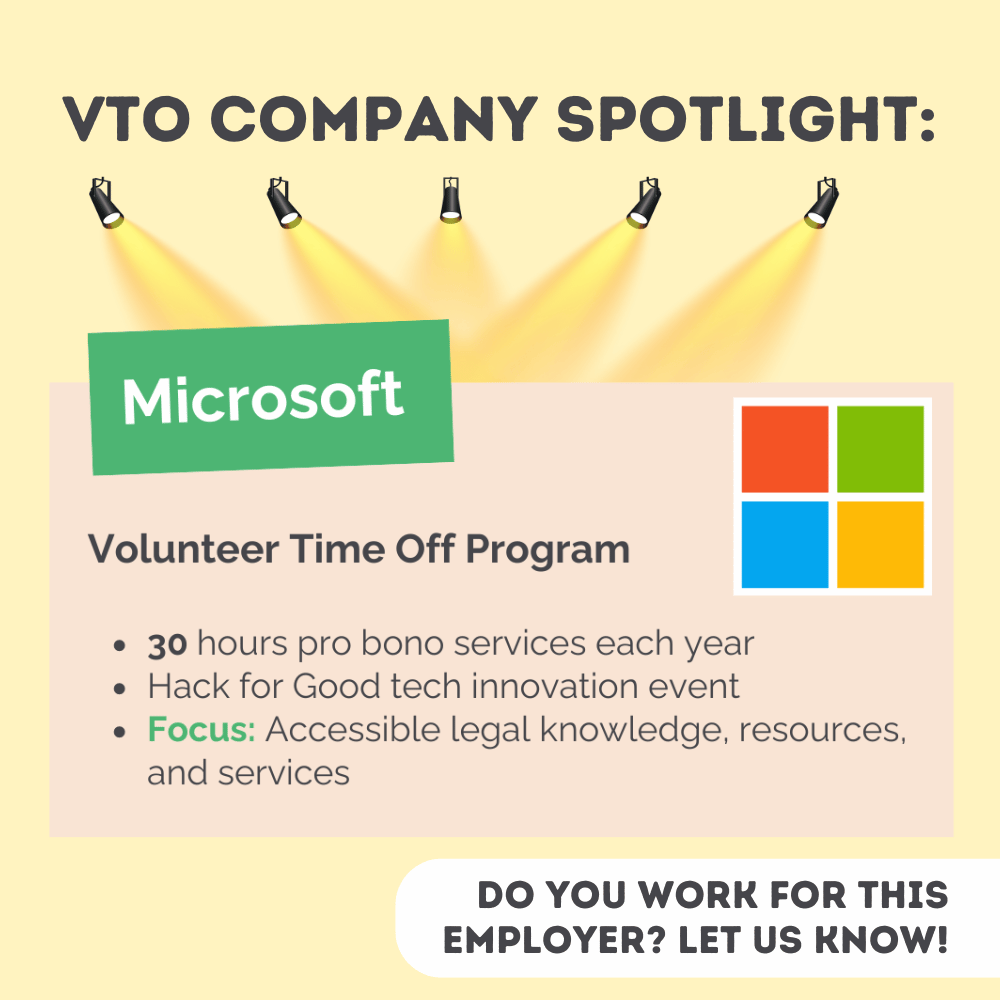A Deep Dive into Marketing Volunteer Time Off for Nonprofits
Paid Volunteer Time Off (VTO) programs continue to gain traction as companies boost their CSR while engaging employees in meaningful community activities. These initiatives not only reflect a company’s commitment to social impact but also empower organizations to make the most of their volunteer base. However, despite the growing prevalence of VTO, there’s a significant knowledge gap regarding workplace giving initiatives—even among eligible supporters. And that’s where a well-thought-out plan for marketing volunteer time off to your audience will come in handy!
In this post, we’ll dive into the world of Volunteer Time Off for nonprofits and share key recommendations for effectively promoting VTO. Here’s what we’ll cover:
- What Is Volunteer Time Off?
- Why Does Marketing Volunteer Time Off Matter?
- 10 Top Strategies For Marketing Volunteer Time Off at Your Org
- Bonus: Free Sample Volunteer Time Off Marketing Materials
Read on to explore the transformative impact corporate volunteer initiatives like these can have on your organization, its mission, and your community as a whole.
Let’s get started!
What Is Volunteer Time Off?
Volunteer Time Off (which is also referred to as VTO, paid-release volunteer time, or employer-sponsored volunteerism) is a unique benefit that allows employees to spend typical work hours volunteering with charitable causes. This type of program supplies additional time off, above and beyond any existing vacation or sick leave, and is specifically designated for team members to participate in volunteer activities.
VTO programs vary among companies in terms of eligibility criteria, time off granted, submission processes, and more. Some companies offer a set number of VTO hours per year, while others allow employees to use VTO on a flexible basis. The types of volunteer activities permitted can also range from community service projects to skills-based volunteerism and more.
Why Does Marketing Volunteer Time Off Matter?
As a form of corporate partnership, the purpose of Volunteer Time Off is multi-fold. First, the programs enable companies to demonstrate commitment to social responsibility and engage employees in meaningful ways. At the same time, employees are presented with a unique opportunity to give back to their communities and support their favorite causes—like yours—without missing a day’s wages. This fulfills individuals’ desires to make a positive impact and fosters a sense of purpose in their work inside and outside the office.
For nonprofits, the availability of volunteer time off widens the prospective supporter pool, incentivizing individual involvement and significantly increasing engagement. However, many employees are unaware of the VTO programs offered by their employers, leading to a missed opportunity for companies and nonprofits alike.
That’s why marketing the programs is so essential, and why organizations like yours are taking increasingly proactive steps to drive awareness among their audiences. When done well, simply highlighting VTO opportunities in donor- and volunteer-facing materials will allow you to bridge the knowledge gap and unlock a new avenue for community involvement.
10 Top Strategies For Marketing Volunteer Time Off at Your Org
Crafting a Volunteer Time Off marketing plan is essential for organizations looking to supercharge volunteerism and engage supporters with corporate incentives. So, how, specifically, will you increase awareness of the programs among your audience to maximize participation? We recommend implementing the following strategies and best practices in your efforts.
1. Establish Volunteer Time Off metrics and KPIs to track.
When it comes to marketing just about anything—including volunteer time off and other corporate giving programs—determining which KPIs (or Key Performance Indicators) your team will track is an essential first step. Implementing the appropriate metrics in your promotional plan allows you to measure the effectiveness of your VTO program and identify opportunities for improvement in your strategy.
These might include:
- Volunteer participation rates
- Number of existing volunteers using VTO
- Number of first-time volunteers using VTO
- Total number of hours donated through VTO programs
- Average number of VTO hours used by volunteers
- Number of companies offering VTO for your volunteers
- VTO volunteer retention rate
- Tangible project impact
- Digital engagement (email clicks, social media likes, etc.)
By tracking these indicators and more, you can supercharge your efforts with data-driven decisions, demonstrate the program’s value to stakeholders, and optimize volunteer engagement. And that will set you up for successful marketing as you begin promoting the opportunities to supporters.
2. Look at examples of other organizations’ VTO marketing efforts.
If your organization has yet to begin promoting volunteer time off to your audience, it can be a bit overwhelming if you’re not sure where to start. Fortunately, studying successful examples from your peers and other organizations’ VTO marketing efforts can provide valuable insights and inspiration.
Take a look at the following web pages from two nonprofits sharing information about Volunteer Time Off programs with their supporters:
Example #1
Example #2
Each one provides an essential overview of the opportunity, and analyzing their strategies can help identify best practices, innovative ideas, and common pitfalls to avoid.
3. Provide an overview of VTO basics on your nonprofit website.
As the examples showcase above, one of the best ways to promote volunteer time off to your supporters is to share information about the programs on your nonprofit or school’s website. After all, your website is an invaluable resource for volunteers and donors looking to get further involved with your organization. It makes sense for VTO to be a featured opportunity!
If you already have a Volunteers’ page on your site, be sure to add a blurb about Volunteer Time Off there—along with instructions on how individuals can locate their companies’ guidelines. You can also include information on your workplace giving or “Ways to Give” pages or even dedicate a brand new page to all things VTO.
Regardless, a clear and concise overview can serve as an essential incentive for volunteer engagement. By making this information easily accessible on your site, you can educate visitors, encourage more individuals to take advantage of VTO, and reduce barriers to participation.
Top tip: Once you have VTO content live on your website, use Google’s Ad Grants program to promote the page to a wider audience at no cost!
4. Share impact-focused volunteer time off content on social media.
Another way to spread the word about Volunteer Time Off programs is by sharing information from your organization’s social media profiles. For the best results, the content you publish should highlight the benefits of volunteerism on your cause and emphasize the convenience with which individuals can support your efforts.
Try scheduling a combination of informational content, mission impact stories, volunteer testimonials, statistics and research, participating companies, step-by-step instructions, and more. Across all your posts, keep in mind platform-specific best practices, such as regarding multimedia materials, hashtags, linking strategies, and more.
Remember: Social media is a powerful tool. Use it to show supporters how they can do even more to move your mission forward in tangible, hands-on ways. As a result, you can amplify your organization’s message, attract new supporters, and build a growing community around your cause.
5. Source employment information from volunteers and donors.
In order to locate opportunities for supporters to take VTO while volunteering with your cause, you’ll need access to their employment data. It should be a no-brainer that you’ll want to know where your volunteers work. However, you shouldn’t overlook the VTO potential of your donors, either! Most organizations’ donors and volunteers overlap by a significant amount—and volunteer incentives like VTO can help encourage even more donors to give their time.
So, how can you get the information if it’s not already available? One of the easiest ways is to request employment data directly within your volunteer registration forms, donation pages, and more. However, other identification methods may include the usage of a matching gift company search tool, email domain screening, data appends service, and more.
6. Inform volunteers about VTO opportunities within onboarding.
Make sure volunteers are familiar with the idea of volunteer time off from the start of their engagement to ensure available opportunities do not go unclaimed. For this, we recommend incorporating VTO information directly within the onboarding or training processes.
This approach helps set expectations, drives immediate engagement, and encourages volunteers to see if they qualify. Early education about VTO can also enhance volunteer retention and satisfaction by making it easy for eligible supporters to get paid while supporting your cause!
7. Send personalized follow-ups after volunteer activities.
Personalized follow-ups help build a stronger relationship between each volunteer and the nonprofits they support, thus increasing the likelihood of ongoing engagement and retention. As you begin implementing a plan for marketing volunteer time off for your cause, you don’t want to overlook the power of personalized communication.
Here’s how this can work:
Let’s say your organization gains a new volunteer who works for Warner Media, which you know offers a generous amount of VTO. After the individual’s first volunteer shift, you decide to send a tailored thank-you note. The note should demonstrate your appreciation of the individual’s support and remind them about their company’s volunteer incentives.
When the individual reads the message, they’re ultimately inspired to complete the request process for their employer to count their hours toward the Volunteer Time Off program.
If you have access to program guidelines or submission instructions, that information can help simplify the experience for your volunteer, too!
8. Encourage VTO-eligible supporters to organize group events.
One of the most impactful ways to promote volunteer time off is by leaning into word-of-mouth marketing. To demonstrate the value, let’s say the same volunteer continues supporting your organization with their VTO. You already know the individual works for a company that offers volunteer time off for its employees. One of the best ways to get more VTO-eligible supporters through your doors is to empower existing volunteers to organize group events with their peers.
If Volunteer A receives dedicated VTO hours, it can be assumed that Volunteer A’s colleagues can likely request VTO, as well. That means you’ll have a larger pool of individuals willing to do important work for your cause without facing the impact of a lost day’s wages.
Bonus: Free Sample Volunteer Time Off Marketing Materials
Ready to jump into marketing volunteer time off to your audience, but not sure where to begin? Feel free to use these sample graphics as a starting point.
Sample #1: General VTO Overview
Here’s what this example does well:
With an attention-grabbing header and concluding with a clickable CTA button, this sample focuses on driving action among volunteers. When users click the button to learn more, they should be directed to a VTO resource on your site. There, it should overview the opportunity in detail and instruct supporters on how to determine their eligibility for the programs.
Sample #2: Informational Infographic
Here’s what this example does well:
An infographic can be an excellent way to share tons of important information in an engaging and visually appealing manner. This sample content highlights a few key insights from our Volunteer Time Off statistics page, providing a helpful snapshot of the opportunity for nonprofits and their supporters.
Sample #3: Defining Volunteer Time Off
Here’s what this example does well:
It’s important for your audience to have a solid understanding of VTO programs before you can expect them to participate. Therefore, starting at the beginning with an easy-to-understand definition allows you to ensure all stakeholders are on the same page.
Sample #4: VTO Company Spotlight
Here’s what this example does well:
One of the best ways to ensure supporters understand the VTO opportunity is to highlight real examples of the programs. This sample marketing material does so well by sharing specific guidelines and insights regarding the highlighted company’s programming. Plus, it encourages the organization’s audience to self-identify as eligible for the particular program!
Wrapping Up & Next Steps: Start Growing VTO
Volunteer Time Off programs can drive significant social impact for nonprofits, their supporters, and the companies interested in giving back. As a result, the opportunity is not one that should be overstated.
Start by encouraging your audience to tap into VTO and other workplace giving initiatives. From there, your team can harness the power of employee volunteerism to advance its mission more effectively than ever before.
Interested in supercharging your organization’s corporate engagement strategy? Check out these recommended resources for further reading:
- Volunteer Time Off Companies | Top Programs to Know. Tons of businesses offer VTO opportunities for their employees. Explore our compilation of leading companies with volunteer time off to see examples.
- Maximizing Impact With Corporate Volunteer Grant Programs. Volunteer incentives can go beyond volunteer time off, too. Learn all about volunteer grants, or Dollars for Doers, in this complete guide.
- Free Download: The Ultimate Guide to Corporate Matching Gifts. Matching gifts are one of the most widely available forms of corporate giving. See how your nonprofit can maximize its fundraising here!



